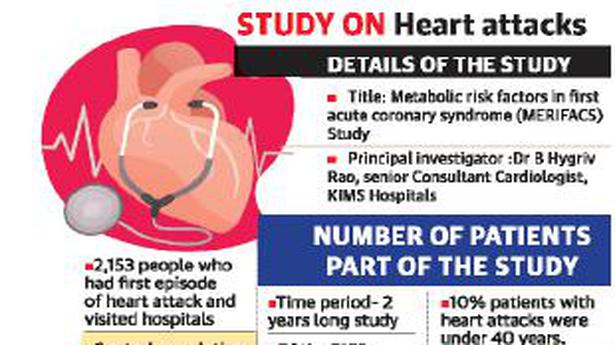
‘Heart attack risk posed by overweight, sedentary lifestyle, poor diabetes control’
The Hindu
Study conducted by city-based cardiologist published in the Indian Heart Journal
Often, diabetes, hypertension, smoking, high LDL-Cholesterol are cited as risk factors for developing heart attacks. The risk factors are checked regularly. Patients put in efforts to keep them under control.
Though the risk posed by overweight and obesity (high waist hip ratio, high Body Mass Index,) HbA1C (marker of diabetes control), high triglycerides, sedentary lifestyle (low HDL-Cholesterol), in developing heart attacks are discussed, efforts to bring them under control are not often seen.
A large study conducted by researchers across India, led by a Hyderabad-based cardiologist, has concluded that the risk posed by overweight, sedentary lifestyle, uncontrolled diabetes, is comparable to the risk posed by each of the conventional risk factors such as hypertension, smoking, high LDL-C. And that both forms of risk factors have to be brought under control to cut down the risk of ACS including heart attack.
HbA1C is a blood test which helps to know average blood sugar levels over the past three months.
The study titled ‘Metabolic risk factors in first acute coronary syndrome (MERIFACS) study’ was published in the Indian Heart Journal in August. The case control study conducted in 15 health facilities across India included 2153 patients who had their first episode of heart attack and visited hospitals, and 1210 healthy people in the control group who did not have a history of heart attack and visited outpatient units for routine health check ups.
The researchers have studied the presence of the Conventional Risk Factors, and Metabolic Risk Factors in the 2153 patients with heart attacks, and 1210 control population.
The following observation will give an idea on why Metabolic Risk Factors have to be controlled: the conventional risk factors were observed in 93% of the 2153 patients, the metabolic risk factors were observed in 97% of the patients. They have tested the presence of the individual risk factors too.













